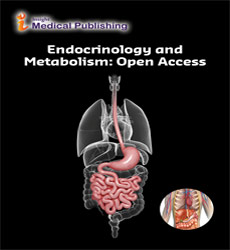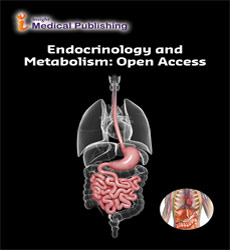Advances in the Management of Type 2 Diabetes Mellitus: Emerging Pharmacological Therapies
Inaya Emilio*
Department of Endocrinology and Metabolism, School of Medicine, University of North Carolina, Chapel Hill, NC 27599, USA
*Corresponding author:
Inaya Emilio,
Department of Endocrinology and Metabolism, School of Medicine, University of North Carolina, Chapel Hill, NC 27599, USA,
E-mail: Emilio.inaya@med.unc.edu
Received date: February 01, 2025, Manuscript No. ipemoa-25-20738; Editor assigned date: February 03, 2025, PreQC No. ipemoa-25-20738 (PQ); Reviewed date: February 15, 2025, QC No. ipemoa-25-20738; Revised date: February 22, 2025, Manuscript No. ipemoa-25-20738 (R); Published date: February 28, 2025
Citation: Emilio I (2025) Advances in the Management of Type 2 Diabetes Mellitus: Emerging Pharmacological Therapies. Endocrinol Metab Vol.09 No.1:01
Introduction
Type 2 Diabetes Mellitus (T2DM) is a chronic metabolic disorder characterized by insulin resistance, impaired insulin secretion and progressive β-cell dysfunction, leading to persistent hyperglycemia and increased risk of microvascular and macrovascular complications. The global prevalence of T2DM has been rising at an alarming rate, fueled by sedentary lifestyles, obesity and aging populations. Effective management of T2DM is crucial not only to control blood glucose but also to reduce cardiovascular risk, prevent complications and improve overall quality of life. While traditional therapies such as metformin, sulfonylureas and insulin remain essential in diabetes management, advances in pharmacology have introduced novel therapeutic agents that target multiple pathogenic pathways. These emerging therapies are reshaping the landscape of T2DM management, offering greater efficacy, safety and personalization of treatment [1].
Description
The development of new classes of antidiabetic medications has expanded therapeutic options beyond glycemic control, addressing comorbidities and long-term complications. One of the most significant advances in recent years has been the advent of Sodium-Glucose Cotransporter-2 (SGLT2) inhibitors.
Importantly, clinical trials have demonstrated substantial cardiovascular and renal protective benefits with SGLT2 inhibitors such as empagliflozin, dapagliflozin and canagliflozin, making them a cornerstone of therapy for patients with T2DM and concomitant heart failure or chronic kidney disease. These pleiotropic benefits highlight a paradigm shift from glucose-centric to organ-protective therapy. Glucagon-like Peptide-1 Receptor Agonists (GLP-1 RAs) represent another transformative class of agents in T2DM management. These injectable therapies mimic endogenous incretin hormones, stimulating glucose-dependent insulin secretion, suppressing glucagon release, delaying gastric emptying and enhancing satiety. The result is improved glycemic control with concomitant weight reduction, which is particularly beneficial for obese patients with T2DM.
Agents such as liraglutide, semaglutide and dulaglutide have demonstrated cardiovascular risk reduction in large outcome trials, leading to widespread use in patients with high cardiovascular risk. More recently, the development of oral semaglutide has expanded accessibility and patient convenience, addressing a long-standing barrier of injection-related adherence issues [2]. Beyond GLP-1 RAs, dual agonists targeting both GLP-1 and Glucose-Dependent Insulinotropic Polypeptide (GIP) receptors are emerging as promising therapies.
Tirzepatide, the first-in-class GLP-1/GIP dual agonist, has shown remarkable efficacy in lowering HbA1c and achieving significant weight reduction, surpassing many current therapies in head-to-head clinical trials. Its dual mechanism amplifies incretin effects, enhancing insulin secretion, reducing appetite and promoting weight loss. The robust clinical outcomes from the SURPASS trials suggest that tirzepatide may redefine standards of care for T2DM, particularly in patients with obesity and inadequate glycemic control. Other innovative pharmacological approaches are under investigation. Glucagon receptor antagonists, though in early development, hold potential in reducing hepatic glucose output and improving glycemic control.
Similarly, novel insulin analogs with ultra-long-acting profiles aim to improve basal insulin therapy by providing steady pharmacokinetics, reducing the risk of hypoglycemia and enhancing treatment adherence. Advances in insulin delivery technologies, including smart insulins that release in response to glucose levels and implantable devices, may further revolutionize insulin therapy in the near future [1].
Another area of progress involves combination therapies that leverage complementary mechanisms of action. Fixed-ratio combinations of GLP-1 RAs with basal insulin or dual formulations of SGLT2 inhibitors with DPP-4 inhibitors simplify treatment regimens, improve adherence and provide synergistic benefits. These combination therapies are particularly effective for patients with advanced disease who require multi-target approaches to achieve glycemic goals. The integration of pharmacogenomics and personalized medicine into diabetes care is another promising avenue. Genetic variations can influence drug metabolism, efficacy and tolerability, making individualized treatment selection increasingly feasible. Advances in biomarker discovery and digital health technologies, including continuous glucose monitoring (CGM) and artificial intelligence-driven decision tools, complement pharmacological progress by enabling precise, patient-centered care. By tailoring therapy to patient-specific characteristics such as age, comorbidities, genetic background and treatment preferences, clinicians can optimize outcomes and minimize adverse effects [2].
Conclusion
The management of type 2 diabetes mellitus is undergoing a profound transformation, driven by the introduction of emerging pharmacological therapies that extend beyond conventional glycemic control. SGLT2 inhibitors and GLP-1 receptor agonists have redefined therapeutic priorities by offering cardiovascular and renal benefits alongside glucose lowering. Dual agonists such as tirzepatide represent a new frontier, achieving unprecedented efficacy in glycemic and weight management.
Advances in insulin analogs, combination therapies and personalized medicine further enhance the therapeutic landscape, enabling tailored and effective treatment strategies. While challenges such as cost, accessibility and long-term safety remain, the trajectory of innovation points toward a future where diabetes management is increasingly personalized, organ-protective and potentially disease-modifying. The integration of pharmacological advances with lifestyle interventions, digital health tools and multidisciplinary care offers hope for improved outcomes and quality of life for millions of individuals living with type 2 diabetes worldwide.
Acknowledgement
None.
Conflict of Interest
None.
References
- Gadde KM, Martin CK, Berthoud HR, Heymsfield SB (2018) Obesity: Pathophysiology and management. J Am Coll Cardiol 71(1): 69-84.
Google Scholar Cross Ref Indexed at
- Pillon NJ, Loos RJF, Marshall SM, Zierath JR (2021) Metabolic consequences of obesity and type 2 diabetes: Balancing genes and environment for personalized care. Cell 184(6): 1530-1544.

Open Access Journals
- Aquaculture & Veterinary Science
- Chemistry & Chemical Sciences
- Clinical Sciences
- Engineering
- General Science
- Genetics & Molecular Biology
- Health Care & Nursing
- Immunology & Microbiology
- Materials Science
- Mathematics & Physics
- Medical Sciences
- Neurology & Psychiatry
- Oncology & Cancer Science
- Pharmaceutical Sciences
